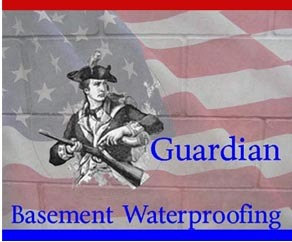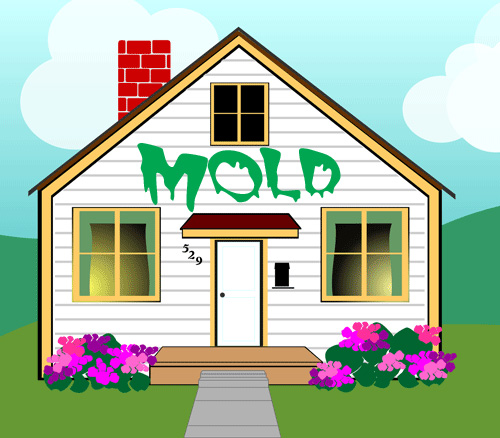


|
|
|
||||||||||||||||||
|
 |
||||||||||||||||||
|
|
|||||||||||||||||||
 Look around the home, find the source. Repair any leaks and cracking. Preventative maintenance is the best way to stop water damage and mold growth. Below you will find some places where water can enter your home. Windows and Doors: Windows and doorways check carefully all around, water often enters in or near corners. Check caulking for cracks and peeling paint or change in color of paint or caulking could be a sign of water getting into the wood. If the window or door frame has swelled. Your Roof: Roof leaks can be hard to locate. Things to look for would be loose or missing fields of shingles. Especially look around chimney, plumbing vent flashing's, wall step flashing's, furnace or B-vent flashing's or attic vents, skylights, ice dams. A wet ceiling tile is often the first sign of a roof leak. Trace the leak backwards to its source on the roof. The leak may be a distance away from the drip you see at the ceiling. Just measure the leak location from a outside wall, then locate that point in the attic with your tape measure. If the leak is in or along the wall, you may need to remove the top tiling to get to the leak. Note: the leak still could originate further up on the roof, so it can be difficult to find. If your having a hard finding the leak then call a roofing professional to check the roof. Act quickly if your roof is leaking. Even if your roof is not leaking now the best thing to do is have your roof inspected from time to time for prevention. Have your roof inspected after any large storm such as hurricanes, hail or even heavy rain or very heavy snow. Even a clogged gutter or your downspout can cause the roof to leak. Have your gutters and the downspouts cleaned out on a regular basis. Foundation and Exterior Walls: Exterior walls seal any holes, look at areas where piping or wiring go through the outside walls. Seal any cracking with a sealant. A foundation leak can be very important. Look for a leaking water pipe, condensation or seeping ground water. Look for cracks in the foundation, the cracks could be small and hard to see or large and noticeable. Use a flashlight when looking for cracks, they will be easier to see even when very small. Condensation or Leak? Inside test, tape a small piece of foil to a inside wall. Keep it there for 2 nights. If the moisture is on the front of the foil then its condensation. Or if the moisture is on the inside of the foil then you have a foundation leak. If condensation use a dehumidifier and upgrade to a air exchanger like the Nu Air if you can. Look for damp or white deposits on the foundation wall. This is dampness. The crack or leak may be located close to the white deposit. Pealing paint on foundation wall is another sign of leakage. Patches of mold on your ceiling or foundation is a sign of a leak in the wall. Lifting floor tiles or rust on your floor is a sign of water under your basement floor. Look for leaks in your plumbing system. Look at joints or a frozen or burst in the pipe at any point. Even a leak from a continuously running toilet. If you can't find the cause of leaking call a professional to help. If you delay long term the result will be more expensive repair. Termite damage is hard to see, all of the damage is under the surface of the wood. If you can see damage then it may be to late. Look for Mud tubs, they are hard to spot. Check along the foundation inside and out, crawlspaces too. The tubs will be vertical discolored sections of wall, check around joists and beams. Wood damage by the time you see damage the wood may need to be replaced. Tap the wood and if you hear a hollow sound then there is a problem. Any wood exposed to the exterior can potentially lead to moisture intrusion or termite infestation. You can stop leaks before they start by regularly inspecting the areas below in your home. Keeping your home in great condition is the key. Flashing: Flashing, is a metal strip around windows, doors, (drip edge flashing) at the edge of your roof, chimneys, decks it's designed to stop water from entering where two different surfaces meet. Vents: Vents need to always have a hood, dryer, exhaust vents, attic vents, gable vents, attic vents, all exhaust outside your home they need boots and to be in good working order. Attics: Your attic is a great indicator of potential moisture problems in your home. The best way to inspect the attic by standing on a stepladder, with your upper body in the attic access hatch. Why? Many homes, the floor of the attic is designed to hold your weight. You can stand on the ceiling joists, but one miss step you could fall through the ceiling. Also, if the joists are covered with insulation, you risk stepping on or tripping over covered wiring and getting an electrical shock. Make sure there is enough insulation to keep house heat from escaping. Among other things, air leaks and inadequate insulation results in ice damming. If ice dams collect around the lower edge of a roof, rain or melted snow can back up under the shingles and into the attic or the house. 1. Look for water stains under the roof and rafters, this shows possible leakage. Keep checking the old stains for signs of new leaks. New stains show possible active leaks. have the roof repaired or replaced. 2. Check for any signs of animals, like droppings. have a professional remove any animals, bats, raccoons, squirrels, mice, bees, etc. 3. Check for Mold on the under the roof, mold shows poor attic ventilation, humidity or air leaks from the house. If you find mold. A. Increase attic ventilation. B. Install a weatherstripping seal around the attic access hatch if missing or worn. C. Check for air leaks around light fixtures, plumbing stacks, chimneys and ducts. Seal any leaks. 4. Inspect roof vents. A. Check if the roof vents are clogged with bird or insect nests. If so, remove nests. B. Wet or compressed insulation under roof vents indicates the vents are allowing wind blown snow or rain to enter the attic. Replace the vents. Make sure there is enough insulation to keep house heat from escaping. Basements: Make sure water can not enter windows or doors. Check sump pumps to make sure they are working, and have a tight lid with no opening to allow radon gas or water vapors to rise from crock. and have a battery alarm to warn you if pump fails. and a battery back up sump pump for power outages or pump failure or two sump pumps with a home generator to run pumps, lights, etc. in case of power outages. Check discharge line for leaks and make sure it runs at least 10' feet away from your home 20' feet is best or as far away as possible. Check for cracks in basement walls and floors for signs of salt, water and mold. There are 3 basic causes for a basement to leak. 1. Poor workmanship. 2. House settled causing cracks in floor and or walls. 3. Water from outside may have built up causing cracks in walls and or floor. Humidity: The relative humidity in your home should be between 30% and 50%. Condensation on windows, water stains on walls or ceilings, and musty smells these are signs that you could have too much humidity in your home. Check areas where air does not easily circulate, behind curtains, under beds, and in closets for dampness and mildew. Use a bathroom exhaust fans for warm showers or baths. When going on trips, use your air conditioning, do not turn it off. The air conditioning system helps remove moisture from your home. If you are concerned about the humidity level in your home, consult with a mechanical contractor or air conditioning repair company to determine if your HVAC system is properly sized and in good working order. Install a Air Exchanger unit like the Nu Air. Air Conditioners: Check drain pans to insure they drain freely and are sloped toward the outlets and that there is no standing water. Make sure drain lines are clean and clear of obstructions. Drain pan overflows usually occur the first time the AC is turned on in the spring. Clean before first use with compressed air or you can pour a water bleach mixture down the drain line until it flows freely. Internal drains blocked. There are small passageways that allow water to drain from front of air conditioner to the rear. If they are blocked water will pool at front of machine and overflow onto floor. If this happens the air conditioner will require removal from window for servicing. Expansion Joints: Expansion joints are materials between bricks, pipes, and other building materials that absorb movement. If expansion joints are not in good condition, water problems can occur. If there are cracks in the joint sealant, remove the old sealant, install a backer rod and fill with a new sealant. "Backer Rod" is a round polyurethane or polyethylene foam material used to support and set the proper depth for caulking gunned or troweled in place sealant. Exterior Wood Sheathing and Siding: Replace wood siding and sheathing that have water damage. Inspect any wood sided walls to make sure there is at least 8" from ground dirt to any wood. Drywall: Drywall should be replaced if wet, or if you see signs of moisture or damage, it's very hard to dry out completely. To protect drywall from water on the floor trim or install it a little above the floor then use molding to cover the gap. Exterior Walls: Exterior walls should be kept well painted and sealed. Landscape should not have soil or other bedding material mounded up against walls. Landscaping: Keep trees trimmed so that branches are at least 7 feet away from any exterior house surface. This will help prolong the life of your siding and roof and prevent insects from entering your home from the tree. Don't plant trees close to your house, the roots can work down to your footer drain and help clog the system over the years. Vines should be kept off all exterior walls, because they can help open cracks in the siding, which allows moisture or insects to enter the house. If ground is slopping towards your house bring in clay and make the grade away from your house, again make sure there is at least 8" from ground dirt to any wood. If you have no room to grade away from your house then a shallow drainage system can be used approx. 1' to 2' ft. deep, such as a "J Channel". Sprinkler System: Inspect and adjust the spray pattern of the sprinkler heads to keep the water sprayed directly away from the house. This avoids excessive water near the foundation. Act Quickly if Water Intrusion Occurs: If water intrusion does occur, you can minimize the damage by fixing the problem quickly and completely. If water is in your home from broken pips or damaged appliances, shut off the water, found outside the house or at the meter. Call the water company for shut off if you can't find the shut off. Immediately remove standing water and all wet materials, and consult with a licensed building professional who can determine the extent of the repairs necessary. Water damage left unattended can result in structural failure and mold growth. If your home is damaged by a fire, flood or storm, take actions to stop further water damage only after it is safe to enter your house. You may have to board up damaged windows, covering a damaged roof with plastic sheeting, or removing wet, damaged rugs, carpet, clothing or personal things. Acting fast will help reduce the time and expense for repairs, in the long run it will save you money. Source: Institute for Business and Home Safety. IBHS is a national nonprofit initiative of the insurance industry to reduce deaths, injuries, property damage, economic losses and human suffering caused by natural disasters. |
|
|
|
|
| Site Map |

